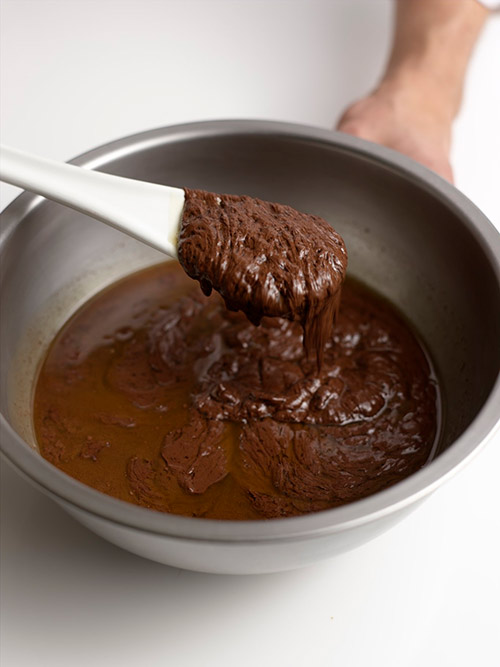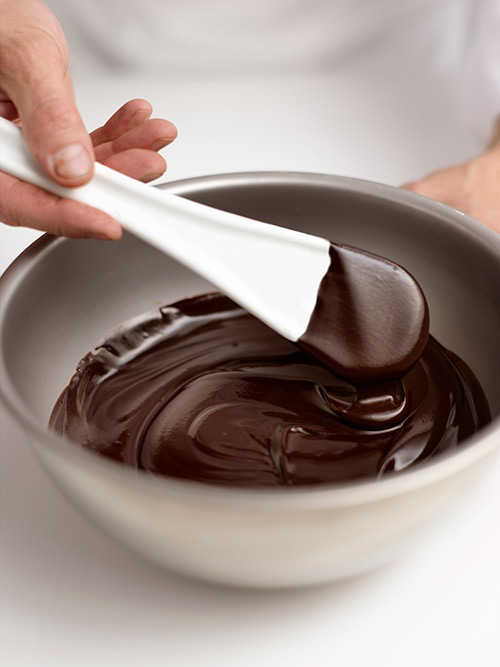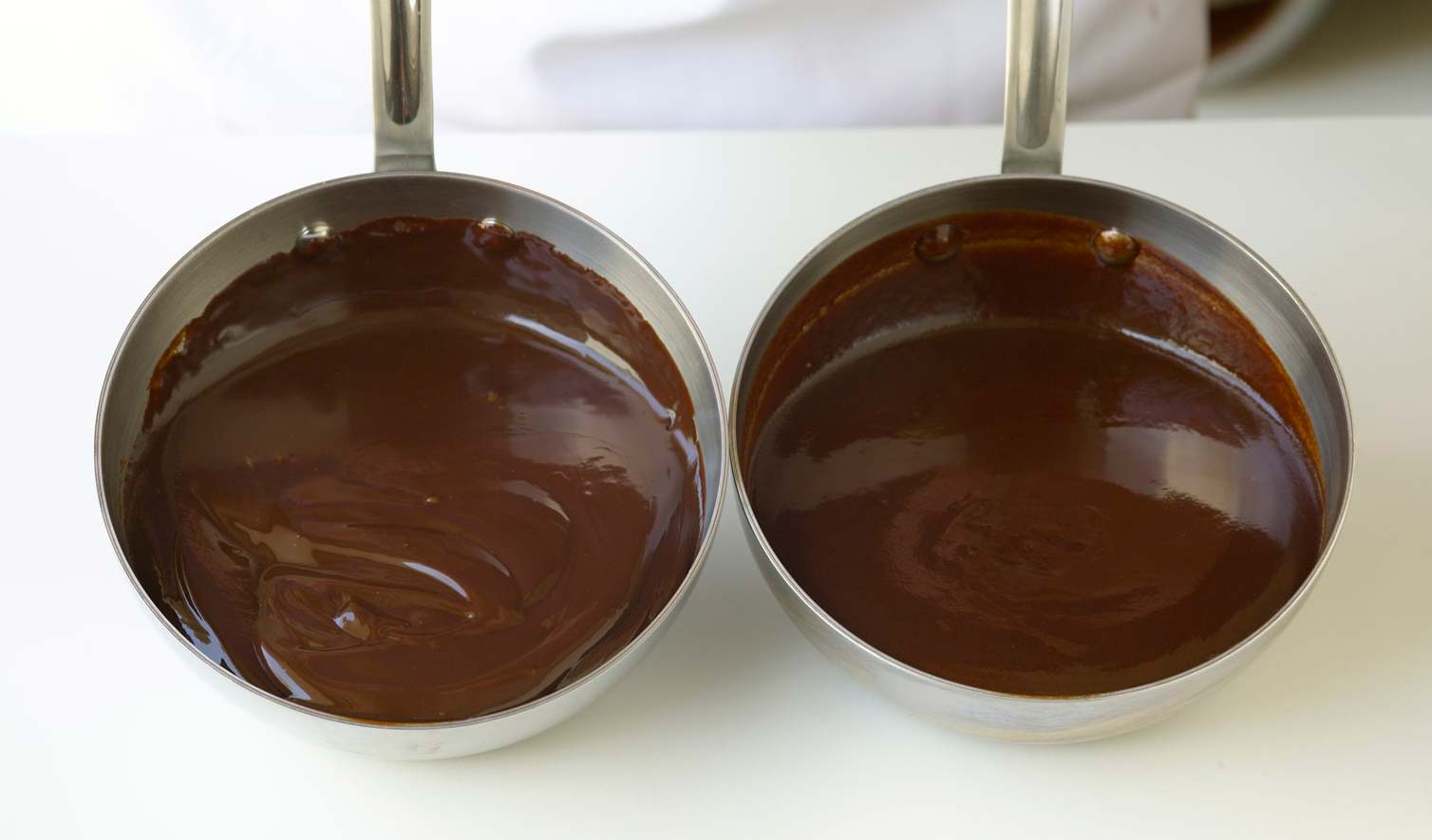Ganache, a creamy mixture of chocolate and cream, is an emulsion; that is, it contains both fat and water in a homogeneous mixture. Because fat and water do not mix easily, any emulsion can separate, which simply means that the fat portion and the water portion do not remain homogeneous. When this happens to ganache, it takes on a grainy appearance and has a thin consistency.
Ganache may separate for a few reasons, like added water or fat that disturbs the ratio. But the most common reason is that ganache is being stirred at an unstable temperature. If a ganache is too cool, agitation can cause the fat to seize, leading to a separated emulsion. Ideally, your ganache should be between 90° and 94°F.


If your ganache doesn’t look smooth and thick, it has probably separated (also referred to as “broken”). If it is allowed to set while separated, it will have a grainy, fatty mouthfeel. Fortunately, there is a simple two-step procedure that will restore any separated ganache.
- Warm the ganache over a water bath until it is 95° to 100°F and whisk it vigorously. This procedure will repair nearly every case of separated ganache, making the ganache ready for use. If it does not come back together in a thick, smooth mixture within 2 minutes while whisking, however, you should move to step 2.
- Add a small amount of room-temperature liquid while whisking the ganache vigorously. Add the liquid a little at a time while whisking until the ganache is smooth again. Either milk or a liquor will work well. Heavy cream should be avoided because it contains too much fat to be effective. This step should require only a small amount of liquid, usually not more than 1 to 2 tablespoons for standard batches. Always use as little liquid as possible to restore the ganache.


